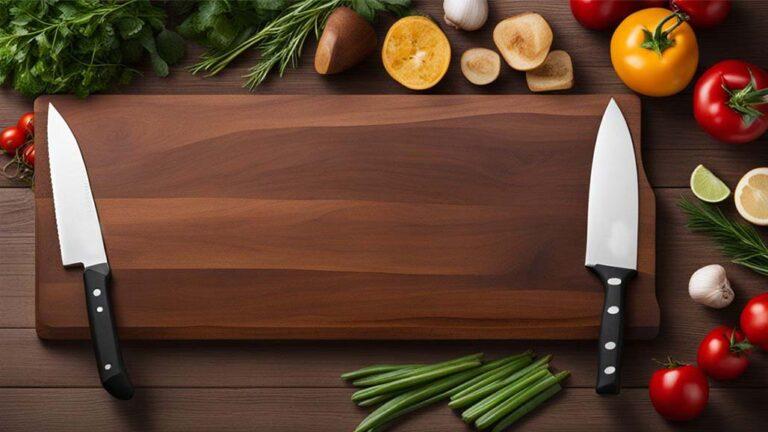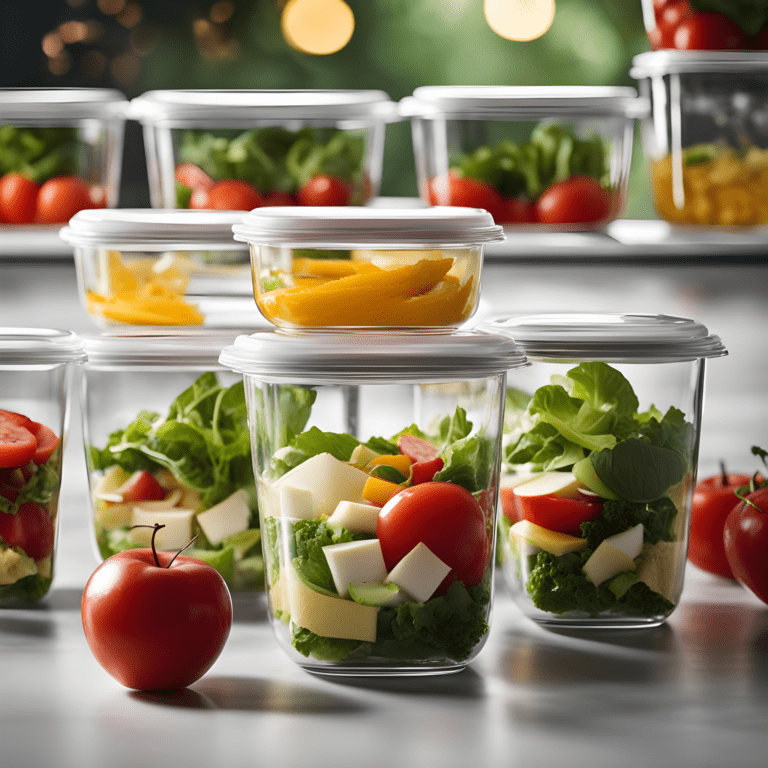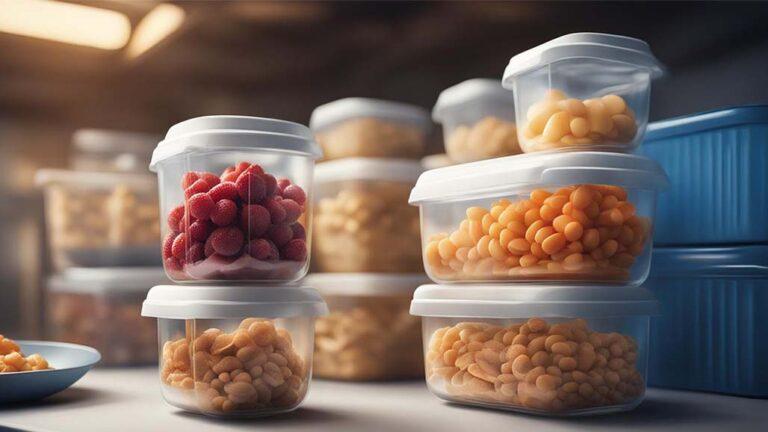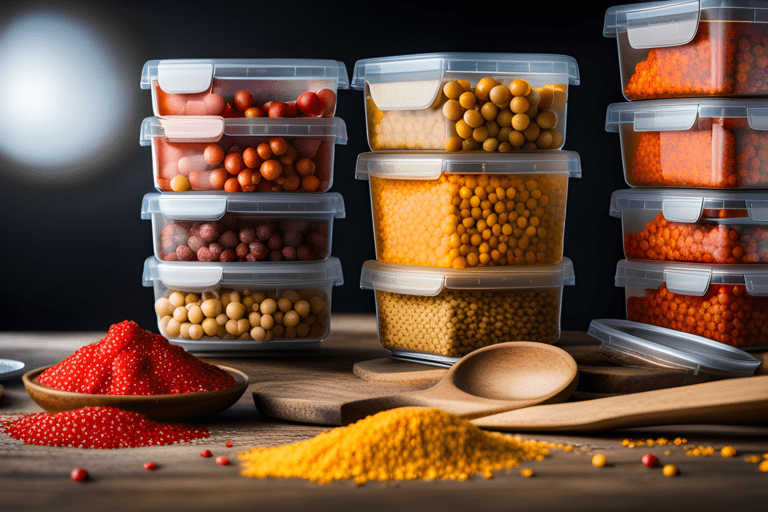
Introduction:
Every person who wishes to ensure the quality and freshness of their store essentials for a longer time should use the best long term dry food storage containers.
Choosing the proper containers for dry things is important whether you’re an expert in home cooking or just trying to reduce food waste.
The issue of long term dry food storage containers will be covered in this article along with different types, their features, benefits, and disadvantages.
For the kitchen’s needs, we’ll look into Glass, Plastic, Silicone, and Metal containers to provide you with the information you need.
How to Choose the Best long term dry food storage container:
If you often prepare meals at home, if you are a devoted home cook, or if you are just trying to keep your kitchen cabinets organized. Selecting the right container for long term dry food storage is a crucial part.
Your choice of container type and quality can have a big impact on the ability to keep dry ingredients fresh, as we will look at in this comprehensive guide to containers.
Type 1: glass containers that are best for long term dry food storage

Glass storage containers have long been an essential component in the food storage industry.
They have a non-reactive surface that won’t pick up smells or scents are transparent and are durable. Glass storage containers have some advantages that make them a popular option for long term dry food storage.
Visibility and Transparency:
The transparency of glass containers is one of its distinguishing qualities. Glass containers, on the other hand, let viewers view the contents plainly.
This is particularly helpful for quickly recognizing your dry ingredients without having to open many containers.
Glass containers give superb visibility, whether you’re looking for that specific kind of flour or keep the quantity of rice you have on hand. Safety of Food and Hygiene
Glass is a slow substance, therefore the food it contains won’t chemically react with it.
Glass containers are a great option for long term dry food storage because of this characteristic.
Dry components of all kinds, from grains to spices, can be safely stored without having to worry about flavor blending.
Glass also doesn’t collect odors and avoids stains, protecting the quality of your stored goods.
An airtight seal:
Many glass container manufacturers offer lids that form a tight seal to keep moisture and air from entering the container. Items like flour which can degrade if exposed to wetness require a high level of sealing Durability and Longevity
Glass bottles are known for being long-lasting. They are good for both pantry and freezer storage because they can bear temperature changes.
Although glass is capable of breaking if dropped on a hard surface, it is scratch-resistant and simple to clean. Glass containers are a sustainable option because they can survive for many years when used carefully.
Simple Maintenance and Cleaning:
Glass containers are frequently dishwasher safe making cleanup easier. Glass’s smooth surface doesn’t collect food particles or stains making cleaning easy and efficient.
Negative Effects of Glass Containers:
Although glass containers have many benefits, they also have some disadvantages.
Weight:
Compared to other materials such as glass and plastic glass is heavier. Glass containers may become less useful as a result of large volumes or for people who have trouble moving heavy goods.
Breakability:
The softness of glass containers is the main cause for worry. Accidental falls can result in broken containers and possible security risks. Glass containers should always be used carefully, especially in a busy kitchen.
Price:
In-glass containers might cost more than their plastic competitors. However, because of the benefits that they offer many people think that the cost is fair.
Size Restrictions:
Compared with plastic containers glass containers may have size restrictions. It can be difficult to find large glass containers for large-scale storage. Glass containers are a great option for long-term dry food storage since they provide visibility hygienic conclusion and airtight sealing. Although they are strong and simple to clean their weight and breakability might not be ideal for everyone.
Type 2: Outstanding containers made of plastic for long term food storage:

Due to their availability, low weight, and flexibility, plastic containers are now an everyday sight in kitchens all around the world. Plastic containers have a special combination of benefits that make them a preferred option for a lot of families when it comes to long-term dry food storage.
Lightweight and simple to use:
Plastic containers are known for their lightweight. Plastic containers are simpler to use than glass or metal containers even when they are packed with dry items.
Plastic containers are not meant to be used in high-temperature situations for example as ovens or microwaves, but they are fine for storing dry materials at room temperature.
Plastic containers are an economical and practical option for long-term dry food storage because of their lightweight form.
They are suitable for different storage needs because of their wide range of sizes & and shapes. However, while using plastic containers people should be careful of the possibility of stains and smell absorption.
Glass and plastic containers for long term dry food storage each have their own benefits and drawbacks.
Your final decision will be based on your choices priorities and particular storage needs. To choose suitable containers. It’s important to carefully consider those factors.
Type 3: Silicone Long term dry food storage containers:

Silicone has been more popular recently as a useful material for different kitchenware items, including food storage containers. Silicone storage containers have special advantages that can be adapted to particular requirements when it comes to long-term dry food storage.
Flexibility and Space Saving:
Flexible silicone containers are well-known for this. While not using you may save space by closing them. For people who favor a simple kitchen design or who have little storage space, this feature is very attractive for them. These containers are simple to arrange cupboard.
BPA-free and non-reactive:
Since silicone is a non-reactive substance, the dry parts you keep cannot come into chemical contact with it. Your food will stay fresh and pure because of this feature.
A lot of silicone containers are also BPA-free, decreasing worries about potentially dangerous chemicals leaking into your food.
Microwave and Dishwasher Safe:
Since silicone containers are frequently dishwasher-safe cleanup is simple. They can also be used in microwaves for easy cooking or heating due to their heat resistance. Their appeal to people looking for efficient and easy-to-maintain take care of storage options is increased by their flexibility.
An airtight seal:
Silicone container lids are made to form a tight seal in order to preserve the freshness of dry ingredients. This keeps moisture and air from entering and keeps your store dry. For products that can degrade when touched by air, such as coffee beans or nuts, airtight sealing is extremely important.
Long-Lasting and Resilient:
Silicone storage containers are known for their hardness. They are appropriate for every kind of store condition because they can endure temperature changes and protect themselves from physical damage. Silicone storage containers can last a very long time if properly maintained.
Negative Effects of Silicone Containers:
While silicone containers have many benefits, there are some
Lack of Transparency:
Silicone containers are not clear like glass containers. Its use may be less useful because you cannot quickly see the contents without opening the container
Not Ideal for Dry Ingredients with Sharp Edges:
Silicone containers are less resistant to sharp or abrasive dry ingredients. Over time such ingredients may cause damage to the container surface.
In summary, silicone containers provide a flexible and space-saving solution for long-term dry food storage.
They are non-reactive dishwasher and microwave-safe and offer airtight sealing. While they lack transparency their durability and collapsible nature make them a unique option for certain storage needs.
Type 4: The Best Long term dry food storage containers of Metal:

Metal containers are less common in the world of dry food storage however they come with a unique set of advantages, especially for specific kinds of dry ingredients. Metal containers should not be ignored when thinking about possibilities for long term storage.
Heat Resistance and Durability:
Metal containers are recognized for their hardness and heat resistance and are often made of stainless steel.
This makes them appropriate for storing dry materials in various kinds of environments such as close to heat sources or in places with different temperatures.
They can be used to store baking soda as well which is advantageous when kept in a metal container.
Airtight seal:
Many metal containers have lids that close tightly. This function aids in creating dry conditions so that your dry goods stay clean
It’s important for products like spices since they can lose their flavor. Many metal containers have lids that close tightly. This function aids in establishing a dry environment so that your dry parts stay clean and uncontaminated. For products like spices, which can lose their strength when exposed to air, it is especially crucial.
Resistance to pests and rodents:
Another form of safety against rats and insects is provided by metal containers. Metal is more difficult for insects to chew through or reach than silicone or plastic.
In places where insects are a problem, metal containers are the best option for long term storage of products like grains or cereals.
Simple to maintain:
Metal containers are usually simple to keep and clean. The majority are dishwasher-safe, making cleaning easier. They have non-porous, smooth surfaces that are stain-resistant
Negative Effects of Metal Containers:
Metal containers have certain advantages but they also have some drawbacks:
Weight:
Metal containers may be heavier than those made of silicone or plastic. For those who prefer lightweight storage solutions or have problems carrying larger goods, this may make them less useful.
Lack of Transparency:
Metal containers are not transparent making it difficult to see what is within without opening them. When you need to quickly locate specific dry ingredients this can be difficult.
Limited Size Variety:
Metal containers might not come in as many different sizes as glass or plastic ones. It can be difficult to find particularly large metal containers for bulk storage.
However, customers who value heat resistance and longevity might find the cost to be beneficial.
Conclusion:
In conclusion metal containers especially those constructed of stainless steel offer strength heat resistance and insect protection. They work well in difficult storage situations and are appropriate for certain kinds of dry ingredients.
Glass plastic silicone and metal long term dry food storage containers all have their own unique characteristics benefits and considerations. Your decision should take into account your unique storage requirements kitchen setting and personal tastes. It is important to carefully consider these variables in order to choose the containers that best meet you are cooking needs and allow simple and efficient long term dry food storage






